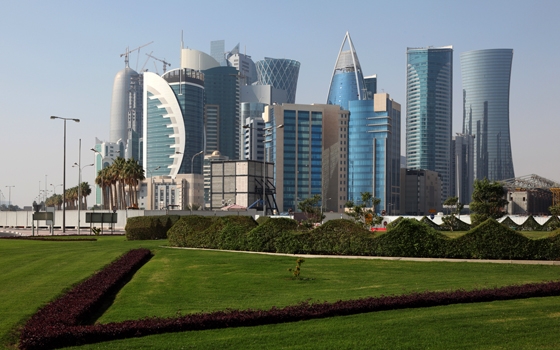Demand for residential and retail real estate in Qatar remains strong, largely as a result of demand outstripping supply. However, over the longer term, new space – particularly in retail – is set to come onto the market and will likely soften prices.
In July, international property services company DTZ issued its second quarter review of the Qatari real estate market, concluding, “Robust economic and population growth continues to drive demand for real estate across all asset classes.” In the residential segment, the average rent for a two-bedroom prime apartment has continued to rise steadily since 2010, hitting close to QR15,000 ($4,100) per month this year.
The report attributed the climb in prices in part to a limited stock of luxury apartments, most of which are located in the Diplomatic District and at the Pearl-Qatar development, 5 km north-east of the city center. Supply as of the end of 2012 had hit 11,200 units, with no new openings so far this year. While 4000 additional units are expected to come onto the market before the end of 2013, the DTZ report expressed doubt that this would occur.
Adding to pressure on the supply side is the growing population, as foreign nationals re-locate to Qatar for work as the country rolls out its extensive infrastructure expansion program and prepares to host the 2022 FIFA World Cup. According to ratings agency Standard & Poor’s, the population is expected to rise by 6% per year through to 2016.
It is possible that demand for rentals may ebb and flow somewhat in the lead-up to the World Cup, as venues and infrastructure projects are completed. Engineering and construction experts are expected to be among the first wave of expatriates, followed later by managers and services professionals.
Pent-up demand for property ownership is also becoming apparent, with sales in July up by just over 100% compared to the same month in 2012, according to data issued by Ezdan Holding on August 19. Transactions totaled $1.5bn for the month, more than double the $741m for July last year, with the real estate firm attributing the increase in part to a ramping up of development projects and work associated with the staging of the World Cup.
Most foreign investors are buying property at The Pearl-Qatar, where sales have improved over the last two years, DTZ said in its report. The upward trend was attributed to better local bank financing rates, as well as “greater certainty on occupational costs and improving rental returns”.
There is also strong demand for prime retail space, though some of this will be met by new developments under construction, with work on at least 12 malls ongoing and another 10 set to be completed by 2015. Like the housing market, demand for retail floor space is being driven by a growing and increasingly affluent population, as well as by retailers seeking to attract Qataris who look to Dubai for their top-end shopping needs. Andrew Williamson, head of retail in the MENA region for property firm Jones Lang LaSalle, said the local retail sector was evolving quickly.
“The retail market in Qatar is … maturing at a very fast pace, and these proposed new ‘mega-malls’ will change the face of Qatar retail,” Williamson said in an interview carried by Arabian Business in mid-August.
DTZ agreed, pointing out that around 40,000 sq meters of leasable space were added to stocks this year, taking the total to some 550,000 sq meters, with more than 1m sq meters of floor space to be added by the end of 2016.
While DTZ said that the retail segment is “relatively stable” for now, the balance could be tipped towards oversupply by the end of the decade. This could push down rental costs in some malls, although it is likely that top-end retail space will come at a premium, especially in the lead-up to 2022.
Oxford Business Group
16 September
























































